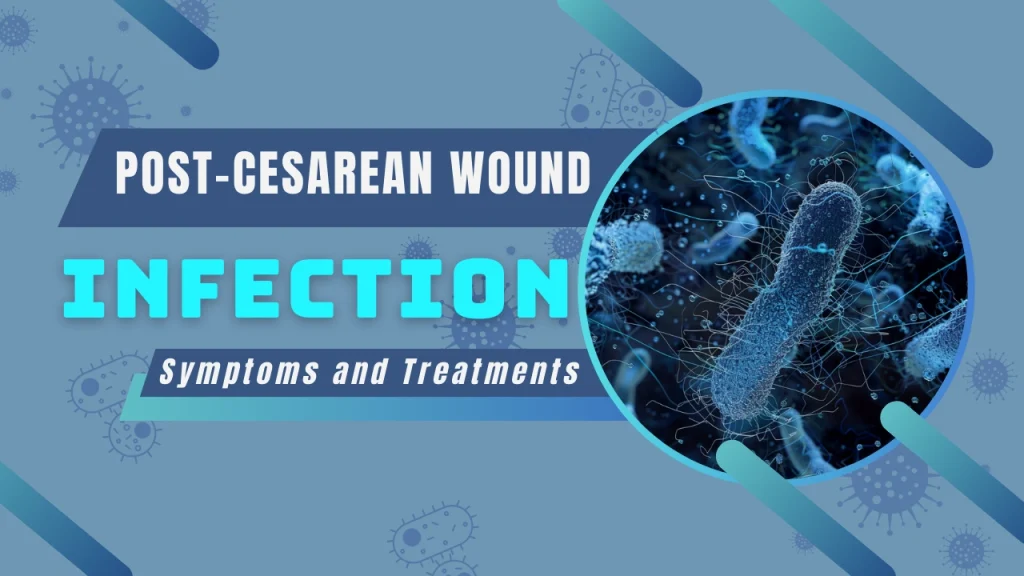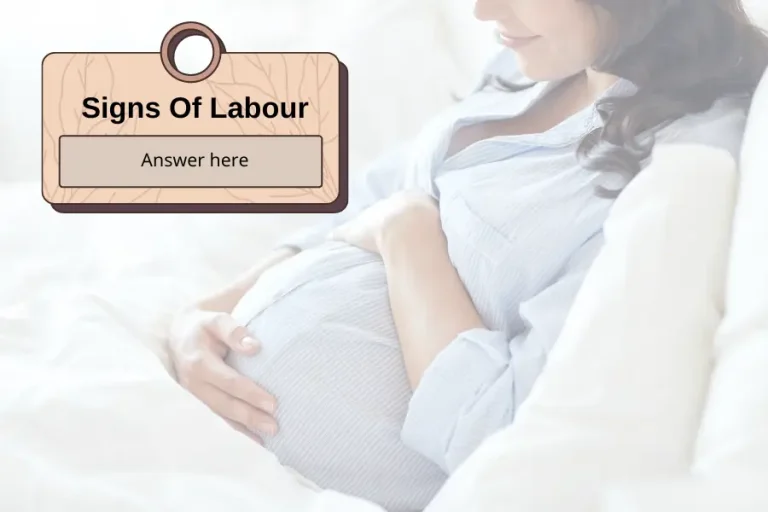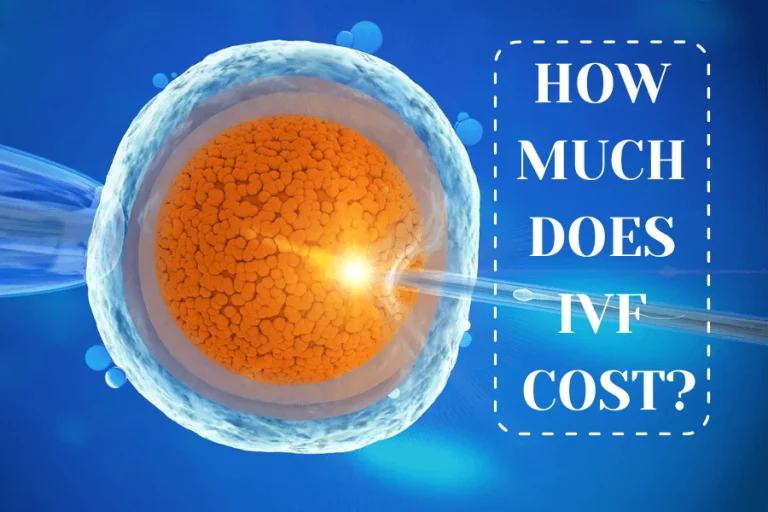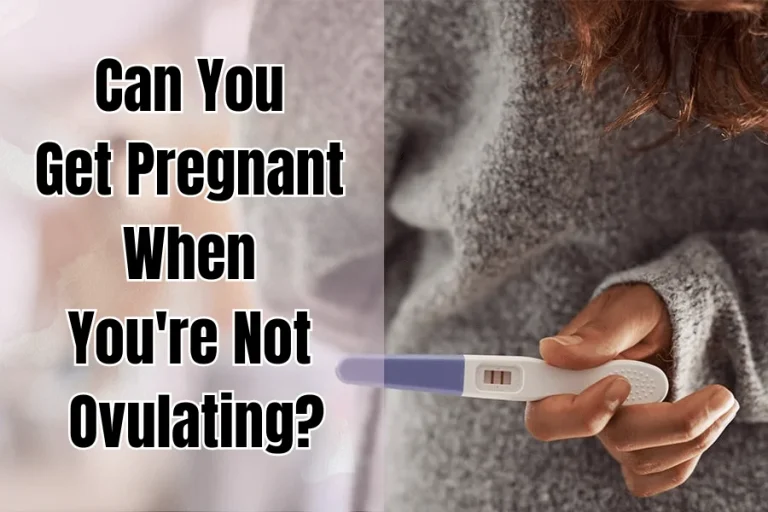
Cesarean deliveries, also known as C-sections, are becoming more common around the world. Data from 154 countries, which cover almost all global live births between 2010 and 2018, shows that about 21.1% of births are done by C-section1. While generally safe, cesarean can lead to infections that seriously affect a mother’s health or even be life-threatening if not treated quickly. Whitney B. You, MD, MPH, an assistant professor at Northwestern University, notes that between 3 to 15% women who have a C-section get an infection at the site of the surgery, in the abdomen, or in the uterus2.
What exactly is a post-cesarean wound infection? This article will provide everything you need to know about post-cesarean wound infections, including their causes, types, and symptoms, as well as methods for treatment and prevention.
What is post – cesarean wound infection?
Post-cesarean wound infection is a specific type of Surgical Site Infection (SSI) that occurs at the incision site of a cesarean section. According to The Centers for Disease Control and Prevention, post-cesarean wound infection will increase within 30 days post-surgery up to when the wound fully heals.3
Wound infections are as a result of contamination of the wound region by harmful micro-organisms. Human skin normally plays an important role as a natural defense that helps our bodies prevent harmful bacteria and microorganisms from entering. However, when the skin is damaged by cutting or surgery, this protective barrier is broken, allowing bacteria and microorganisms from various sources to easily enter through the wound and cause infection. Usually, surgical wounds heal very quickly without any complications. Infection is still a possible complication if the preparation before and after surgery is not adequate.
Causes of wound infection
There are numerous causes that can develop the risk of infected C-section incision.
These causes can be grouped into three types: 1) factors related to mother, 2) factors related to pregnancy and childbirth, and 3) factors related to the medical procedure.4
Factors related to mother: Those women with chronic health conditions, such as diabetes, obesity, lack of nutrients , a weakened immune system, or immune disorders like HIV, are more likely to develop post-cesarean wound infections than others.
Factors related to pregnancy and childbirth: Factors that can increase the risk of infection after a cesarean section include conditions like twin pregnancy, chorioamnionitis, membrane remnants, receiving an epidural for pain, excessive blood loss, etc.
Factors related to the medical procedure: Not using cautionary antibiotics, non-sterile surgical instruments, an unsterile environment during surgery, long-lasting surgery time allow bacteria to easily enter the open as well.
In addition, not often changing bandages or checking the wound after surgery, poor handwashing, and staying inactive can also lead to post-cesarean wound infections.
Types of wound infection
A post-cesarean wound infection, based on serious level, can be divided into two main types: cellulitis và wound (abdominal) abscess. Infected cesarean wounds can only affect the outer layer of the skin and can be treated easily. However, in more severe cases, the infection can even spread and affect deeper tissues.5
Cellulitis: occurs when staphylococcal or streptococcal bacteria, which are commonly found on the skin, enter the wound and cause an infection. This type of infection typically affects the tissue under our skin. Cellulitis leads to inflammation and redness of the skin around the C-section site. This type of infection does not produce pus in the wound but causes swelling and heat.
Wound (abdominal) abscess: a deeper and more serious type of infection, as it creates a pocket of pus at the wound site. Abscesses can form deep in the tissues, near internal organs, or at the site of the uterine incision. Therefore, a mother with a wound (abdominal) abscess requires urgent medical intervention to drain the pus and treat the infection.
Symptoms of post-cesarean wound infection
For mothers who have just undergone a cesarean section, monitoring the C-section incision will help mothers realize early symptoms of infection in order to have timely medical intervention and prevention. Symptoms such as swelling, redness, and pain around the wound site are normal after any surgical delivery. However, if these symptoms become excessive and add some extra complications, do contact a doctor as soon as possible for professional guidance and advice on the best treatment.
Abnormal symptoms of post-cesarean wound infection that mothers should watch out include:
- Excessive swelling, redness, and pain around the incision site
- Abnormal clear, visible and foul-smell fluid leaking from the wound
- Discomfort or even serious painful in the lower abdomen, especially at cervical place, near the wound
- Unusual bleeding from the vagina
- Fever: temperature higher than 100.4 degrees F, about 38 degrees C.
Can post-cesarean wound infection be treated?
Yes, post-cesarean wound infections can be treated effectively. A post-cesarean wound infection is generally treated by using antibiotics and other pain management medications. However, at first, you need to have some additional medical diagnosis. The doctor will use a swab to collect a sample from your wound and send it to a laboratory for testing. After that, the doctor will plan a treatment schedule depending on the serious level of the infection.
Treating a post-cesarean wound infection involves various methods, including antibiotics, surgery, and removing infected tissues. These steps help minimize the spread of infection and promote healing
Antibiotics: For surface infections like cellulitis, antibiotics are enough for treatment without needing to reopen the wound. If the cellulitis does not have pus, treatment typically targets bacteria that are sensitive to methicillin (MSSA) and streptococci bacteria.6 The C-section wound infection will recover after one to two rounds of antibiotic.
Incision and drainage: If the wound is oozing pus or fluid, the doctor will take a small surgery to remove the pus and other fluids. If there is dead tissue, it needs to be cut away until only healthy tissue remains.7 This may require surgery to further examine the surrounding tissues.
Take care of wound: Deep wound requires regularly changing from wet to dry dressings, which means placing a moist gauze inside the wound and covering it with a dry gauze. When changing the dressing, dead tissue is also removed, which helps clean the wound and promotes the growth of healthy tissue.
How to prevent a wound from being infected after a cesarean delivery?
Treating infections can be a complex process that often leads to various consequences from prolonged hospital stays, increased medical costs, to more severe health issues. It is always better to prevent wound infection in the first place, as the adage “prevention is better than cure” suggests.
Pre-cesarean delivery preparation
- Body cleaning: Ensure you bathe or clean yourself thoroughly on the day of the surgery.
- Do not need to shave the bikini area: Shaving the bikini line by yourself can create small cuts that may increase infection risk. Therefore, just leave it to your nurses. They will carefully trim pubic hair along with wash and disinfect the lower abdomen before cesarean delivery.
- Preoperative Antibiotics: “Antibiotics are given routinely before cesarean sections to decrease the risk of uterine infection,” Mabel Wong, MD – the head of the OB-GYN department at Kaiser Permanente, explains.
Post-cesarean wound care
- Regular Dressing Changes: After 48 hours, your wound will be checked and possibly redressed to ensure it remains protected. The new dressing can stay for up to three days, provided there’s no leakage or increased pain. After leaving the hospital, try to follow exactly what the hospital staff instructs you on how to perform and how often to perform it, usually daily.
- Hand and Wound Hygiene: Always wash your hands before and after touching the wound or dressing. Do not allow anyone to touch your surgical wound without first washing or sterilizing their hands. In addition, avoid applying soap or shower gel directly on the healing wound.
- Keep the Wound Dry and Clean: Pat the wound dry using a clean towel or kitchen paper reserved for this purpose.
Post-cesarean wound lifestyle
- Do no skip prescription: Taking antibiotics exactly as prescribed by your doctor and ensuring not to miss any doses or end the course prematurely
- Avoid Heavy Lifting: Do not lift anything heavier than 25 pounds for a few initial weeks.8
- Restrict Strenuous Activities: Avoid heavy activities like driving until your doctor confirms it’s safe and your wound has healed.
- Wear Clean Clothing: Choose for clean cotton clothing to minimize the presence of bacteria and loose-fitting clothes to avoid irritating the wound
- Avoid having sexual activity: Avoid those things that impact the pelvic area and the vagina until your doctor approves.
Conclusion
In conclusion, while infections after a cesarean section can be treated, they still carry health risks that mothers should be aware of. Mothers should recognize the symptoms of post-cesarean infections early to get timely and suitable doctor’s treatment. Since it will help in quick recovery and in reducing the risk of long-term complications. Moreover, to prevent infections, mothers should strictly follow post-surgical care instructions and contact a doctor as soon as possible if you have any health concerns, ensuring safety for both mother and baby.
Sources
- Betran AP;Ye J;Moller AB;Souza JP;Zhang J;Trends and projections of cesarean section rates: Global and Regional Estimates, BMJ global health ↩︎
- Sivan Zuarez-Easton, Noah Zafran, Gali Garmi, Raed Salim. Postcesarean wound infection: prevalence, impact, prevention, and management challenges. Int J Womens Health. 2017; 9: 81–88. ↩︎
- Horan TC, Gaynes RP, Martone WJ, Jarvis WR. CDC definitions of nosocomial surgical site infections, 1992: a modification of CDC definitions of surgical wound infections. Infect Control Hosp Epidemiol. 1992 ↩︎
- Rubin RH. Surgical wound infection: epidemiology, pathogenesis, diagnosis and management. BMC Infect Dis. 2006; ↩︎
- Horan TC, Gaynes RP, Martone WJ, Jarvis WR. CDC definitions of nosocomial surgical site infections, 1992: a modification of CDC definitions of surgical wound infections. Infect Control Hosp Epidemiol. 1992;13(10):606–608. ↩︎
- Liu C, Bayer A, Cosgrove SE, et al. Clinical practice guidelines by the infectious diseases society of america for the treatment of methicillin-resistant Staphylococcus aureus infections in adults and children. Clin Infect Dis. ↩︎
- Stadelmann WK, Digenis AG, Tobin GR. Impediments to wound healing. Am J Surg. 1998;176:39S–347. doi: 10.1016/S0002-9610(98)00184-6. ↩︎
- C-Section. Mayo Clinic. 2022. ↩︎






